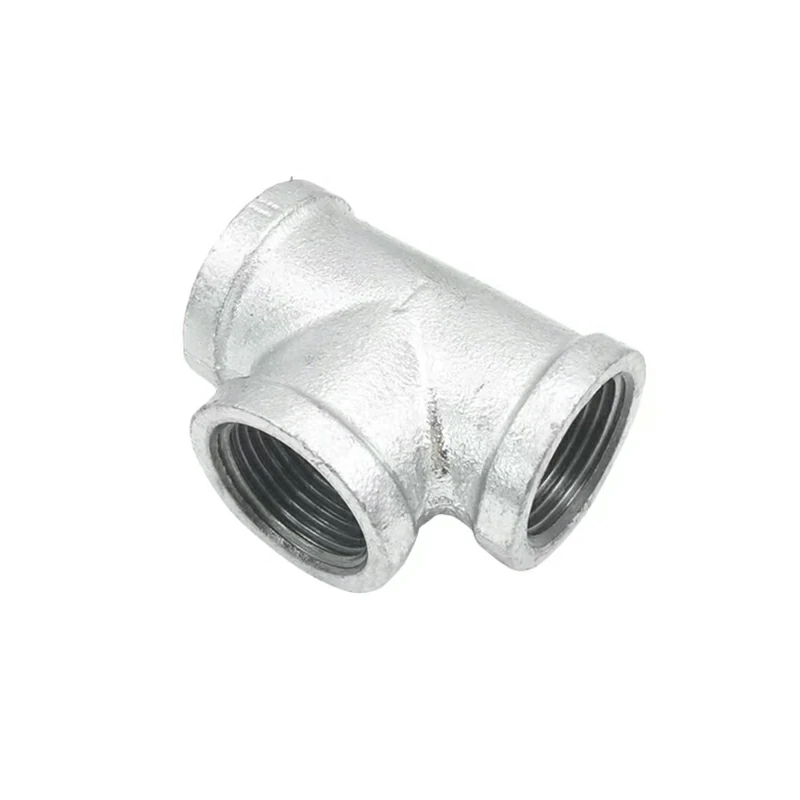Grooved pipe fittings contribute significantly to system sustainability and operational efficiency in various ways:
- Reduced Energy Consumption: Their design promotes smoother flow, reducing pressure drops and turbulence within the system. This efficiency minimizes the energy required to pump fluids through the piping network, leading to energy savings and improved operational efficiency.
- Material Efficiency: Grooved fittings streamline the installation process, often requiring fewer materials and resources compared to welded or threaded fittings. This reduces material waste during assembly, promoting sustainability.
- Ease of Installation and Maintenance: Grooved fittings allow for quick and simple installation without specialized tools or skills. This ease of installation reduces labor costs and minimizes downtime during maintenance or repairs, enhancing operational efficiency.
- Adaptability and Flexibility: They offer adaptability to changes in system layout or requirements, enabling easier modifications or expansions. This flexibility allows for system adjustments without extensive rework, optimizing operational efficiency.
- Longevity and Reliability: Properly installed grooved fittings provide reliable connections that reduce the frequency of replacements or repairs. This longevity minimizes disruptions and contributes to the sustainability of the system.
- Compatibility and Integration: Grooved fittings are compatible with various pipe materials, grooved pipe fittings allowing for the use of different pipe types within the same system. This compatibility enhances flexibility without compromising system efficiency.
- Water Conservation: By maintaining leak-resistant connections, grooved fittings contribute to water conservation within the piping system, preventing unnecessary water loss and supporting sustainability efforts.
- Compliance with Environmental Standards: Many grooved fittings are manufactured using materials or coatings that align with sustainability initiatives, contributing to environmentally friendly practices within industries.
- Reduced Downtime: Their ease of maintenance and repair translates to minimized downtime during servicing, ensuring smoother operations and higher uptime, thus improving overall operational efficiency.
- Improved System Performance: Grooved fittings promote balanced flow distribution, reducing inefficiencies like uneven flow or pressure fluctuations. This optimized performance enhances operational efficiency across the system.
By offering adaptability, reliability, and efficiency, grooved pipe fittings contribute to the sustainability and operational effectiveness of piping systems in various industries, aligning with sustainable practices and promoting efficient operations.
What safety considerations are important during the installation or use of grooved pipe fittings in different industries?
Safety considerations during the installation or use of grooved pipe fittings in various industries are critical to ensuring the integrity of the system and the safety of personnel. Here are key safety considerations:
- Proper Installation Procedures: Follow manufacturer guidelines and best practices for installation, ensuring proper alignment, torque, and securing of grooved fittings to prevent leaks or failures.
- Inspection and Quality Control: Conduct thorough inspections of fittings before installation to check for damage, defects, or irregularities that could compromise performance or safety.
- Qualified Personnel: Trained and qualified personnel should handle the installation, ensuring they understand the proper techniques and safety protocols associated with grooved fittings.
- Torque Wrenches and Tools: Use calibrated torque wrenches and appropriate tools to ensure proper tightening of grooved fittings, preventing under or over-tightening that could lead to leaks or fittings failure.
- Handling Heavy Components: Large or heavy fittings may require lifting equipment or multiple personnel to handle them safely during installation, preventing injuries or accidents.
- Avoiding Overloading: Ensure that the fittings and pipes are not subjected to excessive stresses or loads beyond their rated capacities, which could lead to structural failures.
- Avoiding Contamination: Prevent contamination of fittings or pipes by foreign materials during installation or storage, ensuring the integrity of the system and preventing potential hazards.
- Protective Gear: Personnel involved in installation or maintenance should wear appropriate personal protective equipment (PPE), including gloves, eye protection, and helmets, to prevent injury.
- Environmental Considerations: Consider environmental factors such as weather conditions (wind, rain), lighting, and workspace conditions to ensure a safe working environment.
- Emergency Response Planning: Have an emergency response plan in place in case of leaks, spills, or accidents during installation, with procedures for containment and personnel safety.
- Adherence to Regulations: Ensure compliance with industry-specific safety regulations, standards, and codes applicable to the installation and use of grooved fittings.
- Training and Education: Regularly train personnel on proper handling, installation, and safety protocols associated with grooved fittings to mitigate potential risks.
Adhering to these safety considerations promotes a safe working environment, reduces the risk of accidents, and ensures the reliability and integrity of the piping system throughout its lifecycle.
